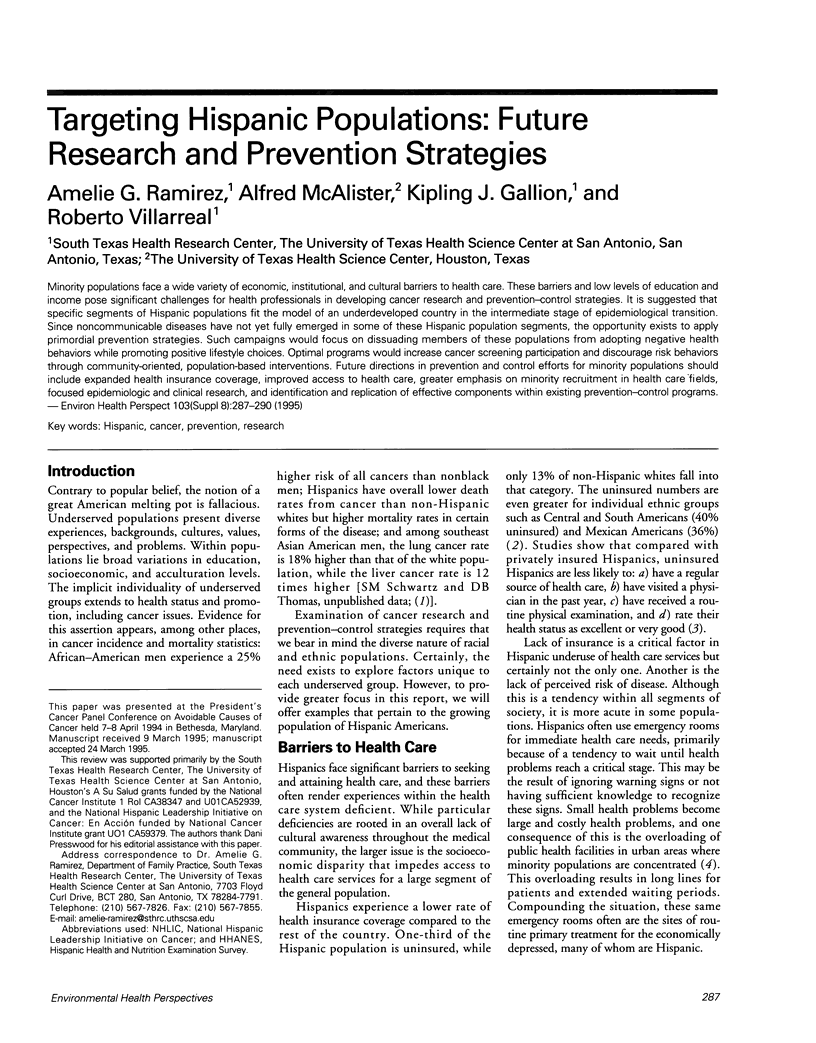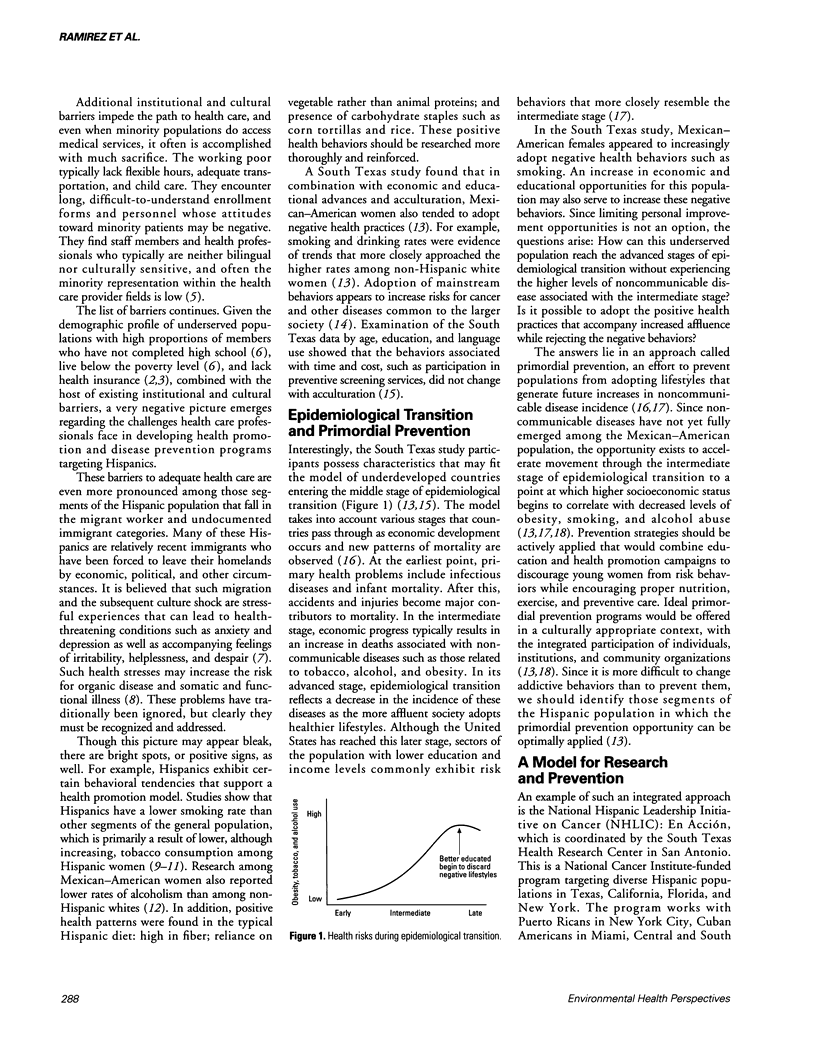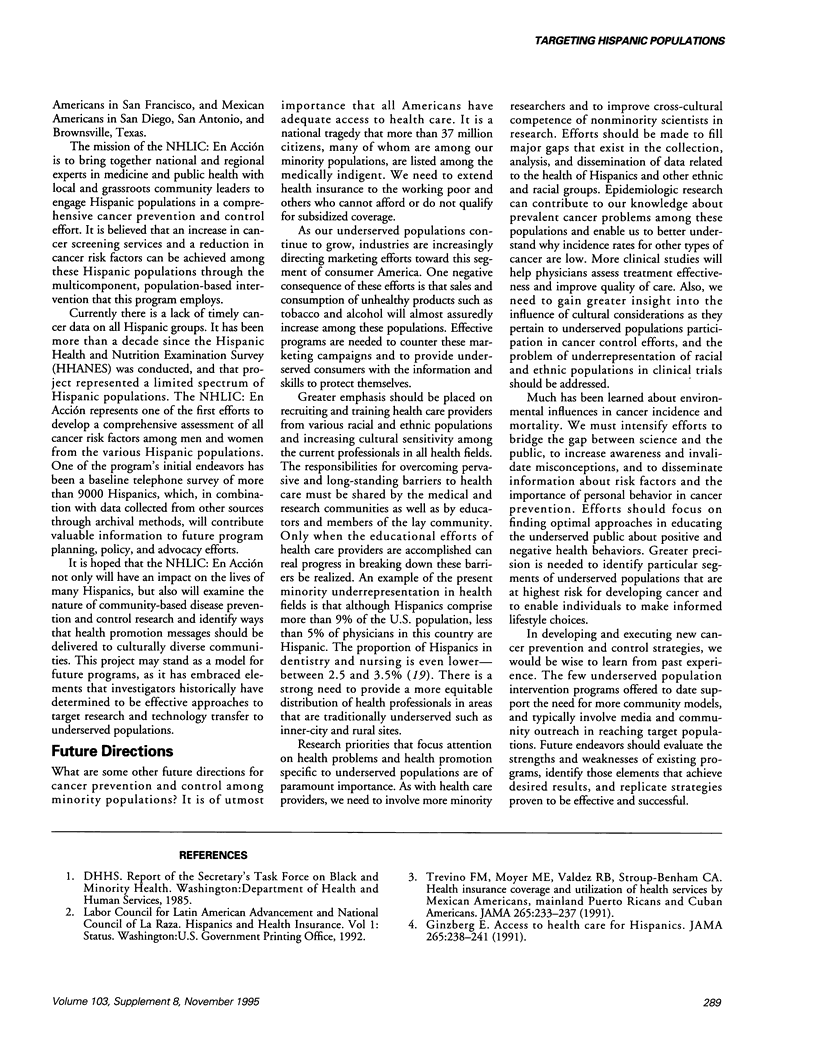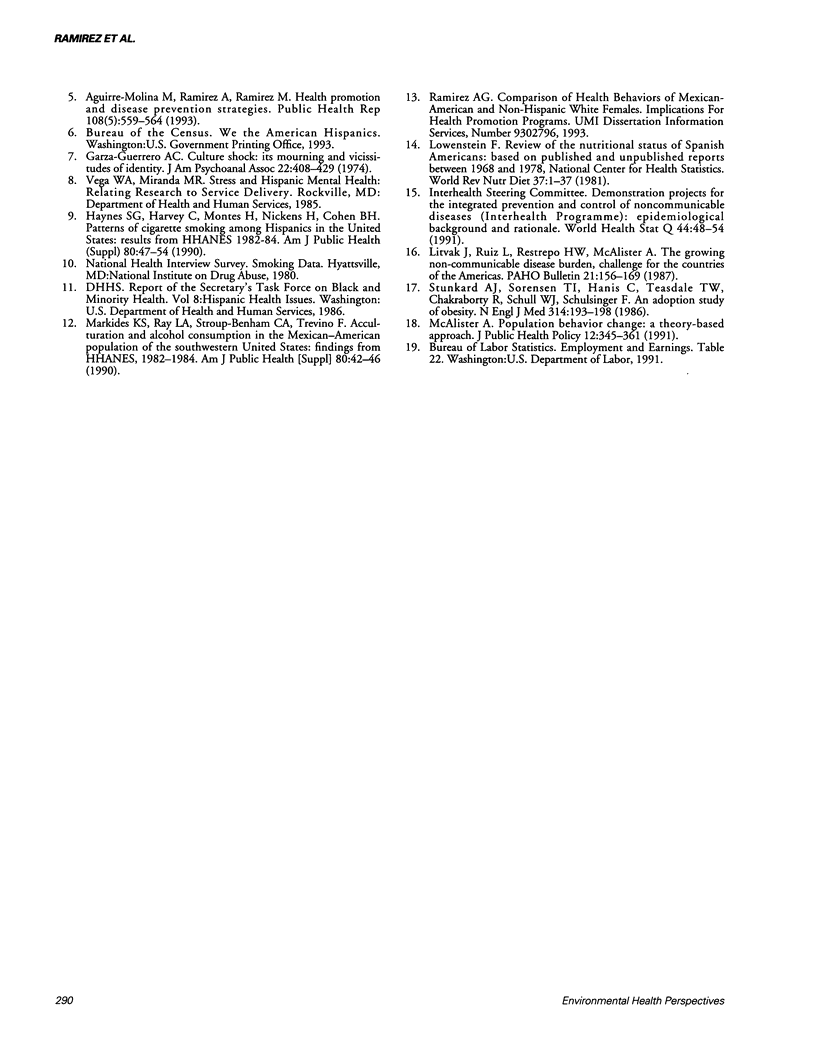Abstract
Minority populations face a wide variety of economic, institutional, and cultural barriers to health care. These barriers and low levels of education and income pose significant challenges for health professionals in developing cancer research and prevention-control strategies. It is suggested that specific segments of Hispanic populations fit the model of an underdeveloped country in the intermediate stage of epidemiological transition. Since noncommunicable diseases have not yet fully emerged in some of these Hispanic population segments, the opportunity exists to apply primordial prevention strategies. Such campaigns would focus on dissuading members of these populations from adopting negative health behaviors while promoting positive lifestyle choices. Optimal programs would increase cancer screening participation and discourage risk behaviors through community-oriented, population-based interventions. Future directions in prevention and control efforts for minority populations should include expanded health insurance coverage, improved access to health care, greater emphasis on minority recruitment in health care fields, focused epidemiologic and clinical research, and identification and replication of effective components within existing prevention-control programs.
Full text
PDF



Selected References
These references are in PubMed. This may not be the complete list of references from this article.
- Aguirre-Molina M., Ramirez A., Ramirez M. Health promotion and disease prevention strategies. Public Health Rep. 1993 Sep-Oct;108(5):559–564. [PMC free article] [PubMed] [Google Scholar]
- Garza-Guerrero A. C. Culture shock: its mourning and the vicissitudes of identity. J Am Psychoanal Assoc. 1974;22(2):408–429. doi: 10.1177/000306517402200213. [DOI] [PubMed] [Google Scholar]
- Ginzberg E. Access to health care for Hispanics. JAMA. 1991 Jan 9;265(2):238–241. [PubMed] [Google Scholar]
- Haynes S. G., Harvey C., Montes H., Nickens H., Cohen B. H. Patterns of cigarette smoking among Hispanics in the United States: results from HHANES 1982-84. Am J Public Health. 1990 Dec;80 (Suppl):47–53. doi: 10.2105/ajph.80.suppl.47. [DOI] [PMC free article] [PubMed] [Google Scholar]
- Litvak J., Ruiz L., Restrepo H. E., McAlister A. The growing noncommunicable disease burden, a challenge for the countries of the Americas. Bull Pan Am Health Organ. 1987;21(2):156–171. [PubMed] [Google Scholar]
- Lowenstein F. W. Review of the nutritional status of Spanish Americans based on published and unpublished reports between 1968 and 1978. World Rev Nutr Diet. 1981;37:1–37. doi: 10.1159/000397994. [DOI] [PubMed] [Google Scholar]
- Markides K. S., Ray L. A., Stroup-Benham C. A., Treviño F. Acculturation and alcohol consumption in the Mexican American population of the southwestern United States: findings from HHANES 1982-84. Am J Public Health. 1990 Dec;80 (Suppl):42–46. doi: 10.2105/ajph.80.suppl.42. [DOI] [PMC free article] [PubMed] [Google Scholar]
- McAlister A. L. Population behavior change: a theory-based approach. J Public Health Policy. 1991 Autumn;12(3):345–361. [PubMed] [Google Scholar]
- Stunkard A. J., Sørensen T. I., Hanis C., Teasdale T. W., Chakraborty R., Schull W. J., Schulsinger F. An adoption study of human obesity. N Engl J Med. 1986 Jan 23;314(4):193–198. doi: 10.1056/NEJM198601233140401. [DOI] [PubMed] [Google Scholar]
- Treviño F. M., Moyer M. E., Valdez R. B., Stroup-Benham C. A. Health insurance coverage and utilization of health services by Mexican Americans, mainland Puerto Ricans, and Cuban Americans. JAMA. 1991 Jan 9;265(2):233–237. doi: 10.1001/jama.1991.03460020087034. [DOI] [PubMed] [Google Scholar]


